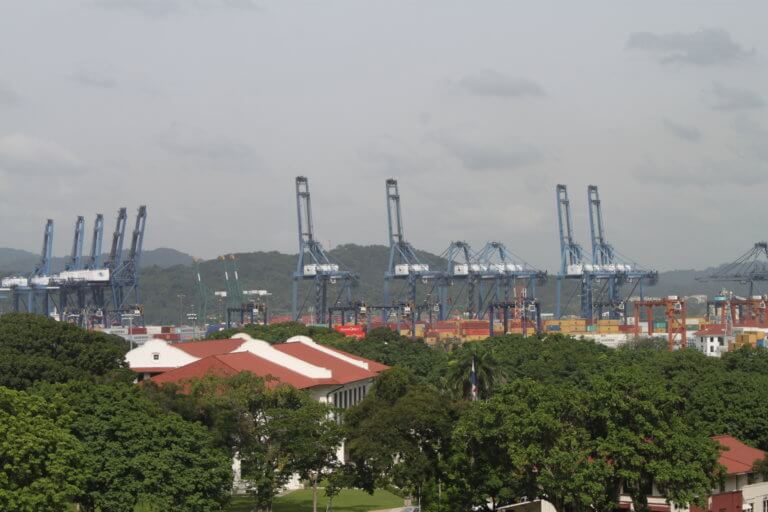When traveling in Panama, visiting its iconic canal is a must. (Who goes to Paris without seeing the Eiffel Tower?)
But for Georgians, the storied waterway has a more practical resonance: It’s a transit point for a large segment of imports from Asia that land at the Port of Savannah before being dispersed around the country.
That’s one reason the Georgia Ports Authority has made a point of linking up with the Panama Canal Authority, establishing strategic partnerships to share information and resources over the years. It’s also why Georgia politicians, from Atlanta City Hall to the Gold Dome, have been paying close attention to goings-on in the isthmian nation.
Since the canal’s expanded locks opened in 2015 (months behind the scheduled unveiling at the centennial celebration in 2014), a longtime ambition to deepen the Savannah harbor has taken on even greater importance.
More than 60 percent of ships now calling on the Savannah port are “neo-Panamax,” those so big that they only fit through the canal’s larger locks. Nearly 40 percent of Savannah’s imports traverse the canal, the highest proportion of any port on the East Coast. Savannah processed a record 4 million containers overall in 2017, and it’s looking to double its container processing capacity by 2028. Panama will be a vital transit point as shippers deploy larger vessels to realize new economies of scale when bringing goods from Asia.
Georgia Tech Ties
While logistics forms the backbone of the state’s ties with the country, it’s certainly not their only vital connection, as became clear from Global Atlanta’s Latin American Crossroads event on Panama in December.
Sponsored by Emory Executive Education at Emory University’s Goizueta Business School, the event featured four panelists from business and academia exploring themes ranging from education to business deals to building a sustainable city in the jungle. Georgia was the common thread in the meandering conversation.
It might be said that President Jimmy Carter laid the strongest foundation for Panama’s eventual ties with his native state. Mr. Carter in 1977 made the bold but unpopular decision to hand over control of the U.S.-built canal to the Panamanian government by 1999, starting the clock for Panama to build up its own management capacity.
Georgia Institute of Technology was a direct beneficiary, as Panamanian students, many from influential families, came to Tech to learn about supply-chain management, logistics and other fields in the 1980s and ’90s.
But the second decade of the 21st century was when Georgia Tech’s ties with the country reached an even higher plane, Marta Garcia, vice president of international development, said during the Global Atlanta event.
More than 10 years ago, a prominent alumnus came to her and suggested that Tech explore
opportunities for research collaborations in logistics. At the time, the university was already engaged with Singapore on a similar project, but nearby Panama, with its proximity and its canal, held significant intrigue.
“Our faculty were flying off to Singapore to do research in logistics. It was 24 hours away and they were spending gargantuan amounts of money, but this huge opportunity was right here, right in our hemisphere,” said Ms. Garcia.
Roberto Roy, who would later become the country’s cabinet minister in charge of the canal as well as Central America’s only metro system, was already a prominent player. A Georgia Tech alum himself, he urged Ms. Garcia to bring researchers down to investigate the educational partnerships. There was only one problem: State funds couldn’t be used for an exploratory junket.
